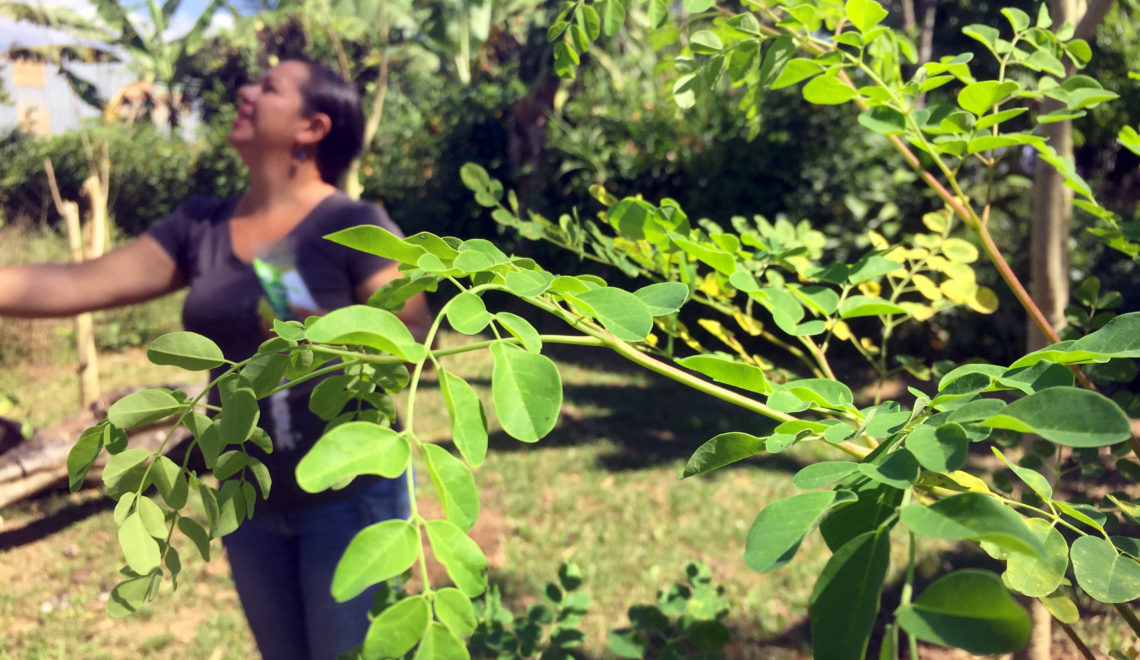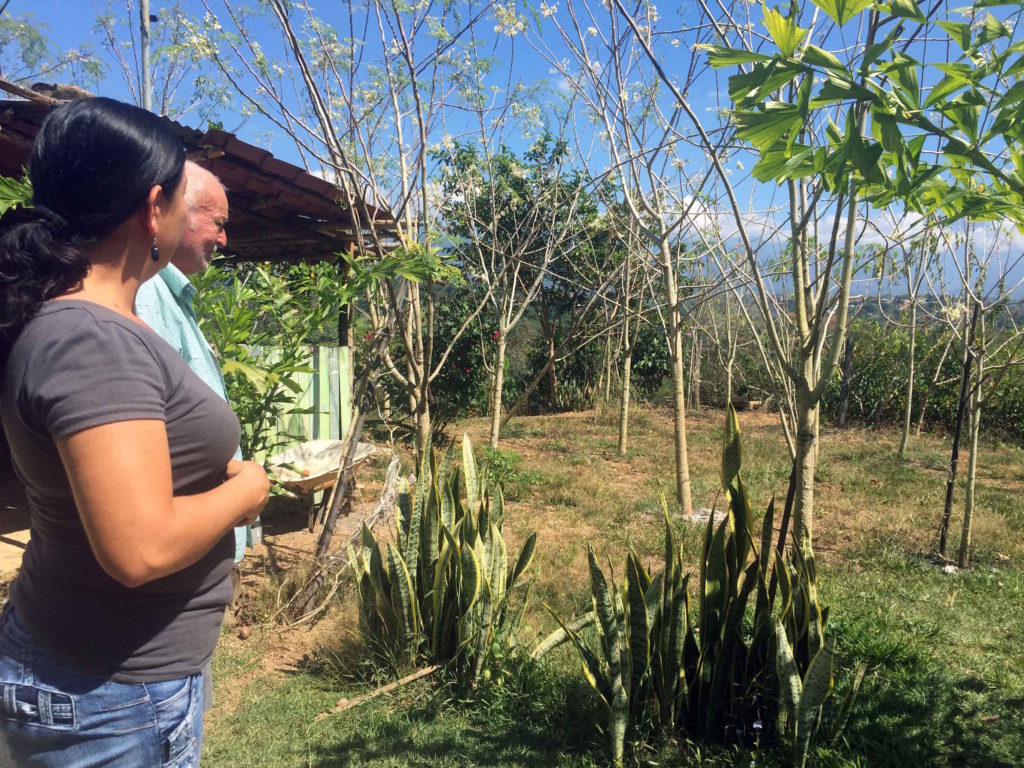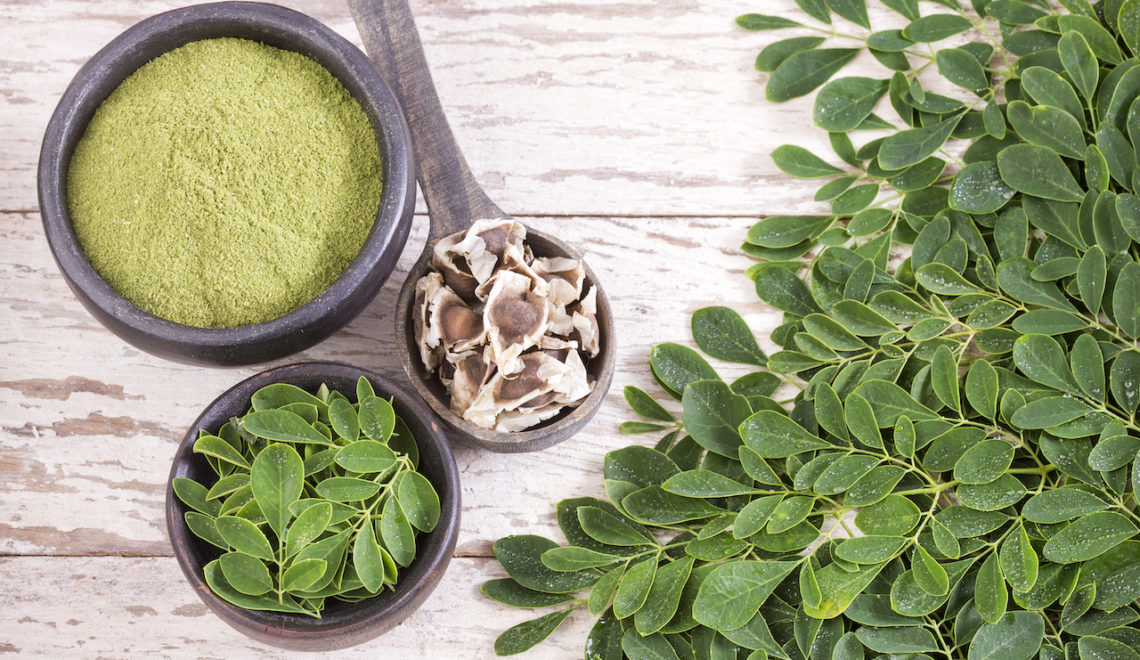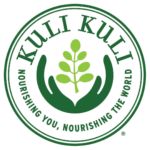
Peggy Chacon Bolaños, a 40-year-old mother of one, lives in Hoyon, a small suburb south of San Isidro, Costa Rica. She and her husband, son, and brother live in a modest single-story home with a large backyard. In their front yard are two silvery-barked trees, their branches shooting upwards, nearly colliding with power lines above.
“We had to cut the trees because they were growing too tall,” says Peggy. The trees, both reaching over 10 meters in height, were planted two years ago. Not long after Peggy first heard of moringa, the miracle tree.
I met Peggy at the local market in San Gerardo, where she sold various spices, locally grown chocolate, and moringa powder and seed oil. When asked about her operation, Peggy invited me to her home where she grows her moringa trees.
STARTING A SMALL BUSINESS
Peggy had been working for the National Bank of Costa Rica in Uvita, a small beach town along the coast. She wanted to work for herself and quit her position at the bank to start her own company. For a brief stint, Peggy sold cakes at the local market which is where she first heard of moringa.
“I noticed a lot of attention being given to [moringa], so I asked my friend, ‘What is this tree?’,” Peggy explained. “My friend told me, ‘You’ve never heard of it? It’s a tree called moringa.’”
Her friend’s father is a member of the Moringa Costa Rica cooperative and grows moringa at three different farms across the country, including Límon, a province near the Caribbean, and Guanacaste, in northern Costa Rica.
After a lot of research, Peggy realized the amazing benefits of this plant. She was immediately taken by its promising health benefits — not just in the form of a powder, but in the oil pressed from its seeds as well. She began using moringa oil on her skin and said the results were impressive.
That’s when Peggy told her husband, “Let’s grow moringa.”
GROWING MORINGA TREES
What started as two moringa trees grew to become a small farm of 42 trees of varying size and age. We walked through the small grove of trees, some up to my waist and others stretching to the sky, three times my height. The small, green oval leaves hung in long, loose pairs, full of promise and hope.
One of the reasons moringa is so nutritionally dense is because while most plants are 90% water, moringa leaves are only 80% water which leaves more room for nutrients.
In order for Peggy to process her large harvests of moringa, she purchased an industrial blender. She uses it to finely blend and strain the sun-dried leaves to create a uniform, green powder. The previous week, Peggy processed over 1.5 kilograms of leaves into powder, which she quickly sold out at the market in one week.
SELLING MORINGA IN LOCAL COSTA RICAN MARKETS
Peggy sells her moringa along with other spices she believes have potent health benefits, like turmeric and ginger, at three different markets across the province of Puntarenas and San José. Every week, she runs out of moringa powder.
We poured over pictures of her moringa drying and blending process. She showed me her pamphlets with information about moringa benefits that she gives to customers. Her information cards recommend adding moringa powder to smoothies, juices, salads, and other foods.
Last year, Peggy was asked to present information at a conference for women entrepreneurs. A huge point of pride for her in that she was able to share her knowledge of healing plants. The conference covered different topics from growing various plants to raising healthy families. She selected moringa as the topic of her talk, teaching other women how to grow and process the nutritious leaves of the moringa tree.

Peggy and her father standing amongst his grove of moringa trees, all flowering in edible white flowers that taste like pepper. His house is located about 15 minutes up a hill from Peggy’s home, where the moringa trees are not flowering.
A FAMILY AFFAIR
Peggy has single-handedly convinced most of her family, including her son, her husband, and her 84-year-old father, to start eating moringa.
“My father had colon cancer. He lived with us here for one year. Consuming moringa gave him a few extra years,” explains Peggy.
“Now, he grows moringa on his property. He eats moringa every single day,” she said with a laugh. “Before moringa, he had less energy, less strength. But now he tells everyone, his energy is from moringa.”
Peggy’s six-year-old niece loves eating moringa flowers. The white flowers have a peppery taste — slightly stronger than the flavor of the fresh leaves. We visited Peggy’s father’s house where he has 30 moringa trees, most of them flowering. We picked and ate the flowers straight off the tree, savoring the fresh flavor.
WHO IS BUYING MORINGA?
Peggy sells mostly to foreigners who come to the market, many of whom have never heard of moringa but are attracted to the bright, green powder. She notes that ticos, as Costa Ricans are known locally, only buy moringa in capsules, a solution to enjoying the health benefits without the flavor.
She said that other vendors at the market warn her that, like previous food trends, such as chia seeds and noni fruit, moringa may lose its popularity.
In response to their concerns, Peggy explains, “Moringa is not a fashion trend. It is health. It is nutrition.”
There are various customers who come to Peggy for her moringa leaf powder and moringa seed oil, which she presses herself. For example, one customer returned to exclaim that moringa oil helped with her eczema.
In the future, Peggy plans to team up with other local artisanal producers to create moringa soap, shampoos, and creams using her own fresh-pressed, organic moringa oil.
“Apart from sharing knowledge, the best satisfaction I get is from doing a good job at showing people how to be healthy,” said Peggy. “It is not important for me to have a lot of money but to know that I am helping people.”













Dear Barbara,
I have enjoyed reading your article on Moringa as grown and processed by Peggy. I would like to be connected to Peggy so that I learn more from her. I live in Lusaka, Zambia, Southern Africa. I have a few Moringa trees on my small farm, but do not know much about the tree.
My names are Emmanuel Kunda a retired broadcaster.
Dear Barbara:
Thanks for sharing all about Moringa.How to make contact with Peggy.
I’m a retired nurse and interested in having information from her.According to her address we are relatively close.
Please let me know.Thanks
How do i purchase Peggy’s Moringa from Costa Rica?
Hello, I am looking for a partner to grow, package and sell the purest Costa Rican Moringa.
Partner needs to know the processes, we have the land and can build the processing plant.
Dear Barbara,
Good day.
Thanks for this article. I am a Filipina and currently at San Jose Costa Rica.
I’m looking for a moringga because l am sick, and this vegetable will help me in my condition.
May l know when l can buy a fresh Moringga leaves.
I am hoping for your a positive response.
Thank you and regards,
Anabel Garlitos Mullens
Hello i would like to come and visit and was wondering if you sold seeds?
Pkm1
Kindest regards wayne
Hello very interesting article! I have a large ranch well located on the south side of Costa Rica, here we get rain twice a week and the land are slopped for fast drainage with highway frontage for easy accessibility. I am willing to finance someone or a Company that may be interested to cultivate and process Moringa in large scale, it is my understanding that the demand for this product is high, if there is anyone out there is interested on my offer, please leave a note, I speak Spanish and Italian as well